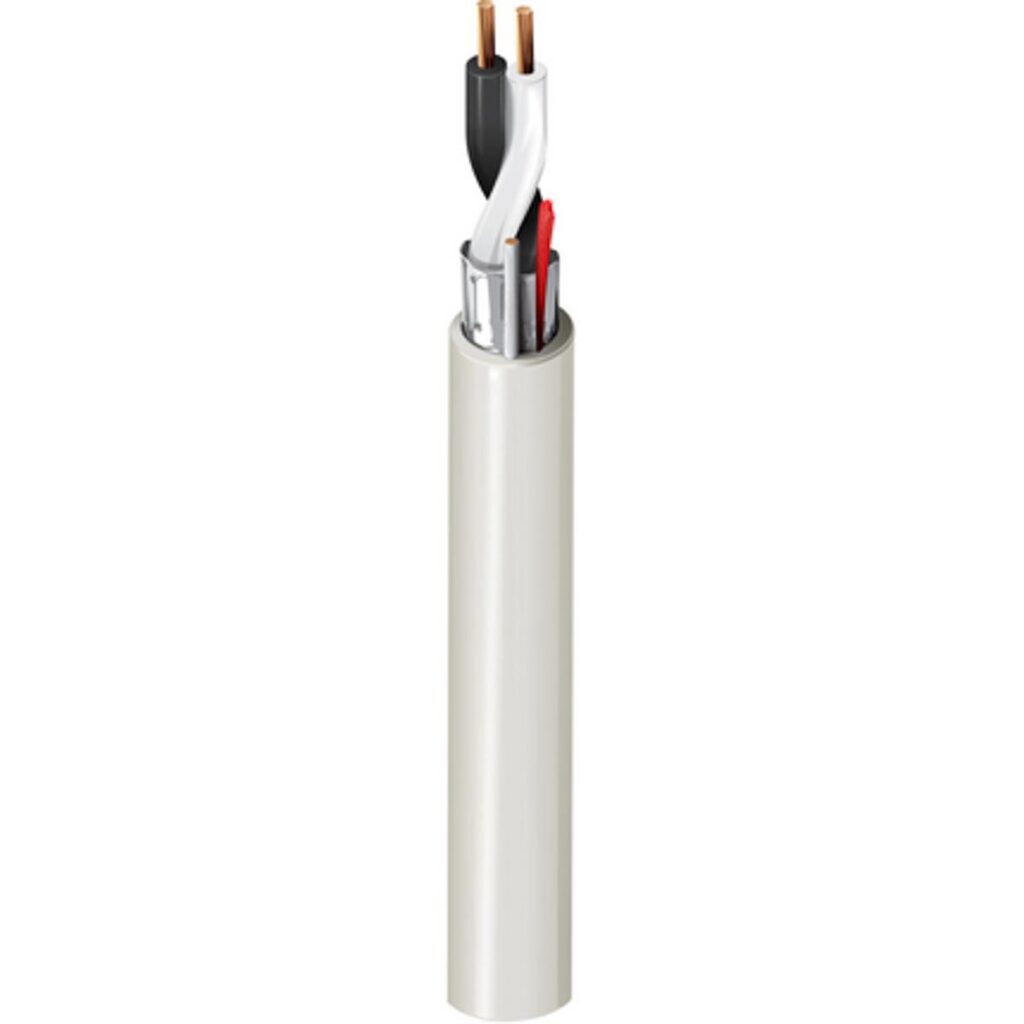
Introduction
In the rapidly evolving world of electronic systems, particularly those designed for surveillance, access control, and alarm signaling, reliable signal transmission is a non-negotiable requirement. Whether you’re installing a residential alarm system or a complex commercial building automation network, one critical component ensures consistent and interference-free communication—the 2 Core Screened Security Cable.
Compact yet powerful, this cable ensures data integrity, minimizes interference, and supports safe, long-term performance in diverse low-voltage electronic applications.
What Is a 2 Core Screened Security Cable?
A 2 Core Screened Security Cable is a low-voltage signal cable that contains two insulated conductors and a screening layer (shield). The shield—usually aluminum foil or braided tinned copper—acts as a barrier to electromagnetic interference (EMI) and radio-frequency interference (RFI), keeping the signal path clean and reliable.
The two cores (often red and black) are typically made from solid or stranded copper, allowing for efficient signal transmission and flexibility during installation. These cables are commonly used in:
- Alarm systems
- Access control networks
- Intercoms
- Audio systems
- PLC communication
- Building automation infrastructure
Key Construction Elements
Understanding the structure of a 2 core screened cable helps identify its strengths:
- Conductors: Solid or stranded bare copper wires (usually 0.22 mm² to 0.5 mm²)
- Insulation: PVC or LSZH (Low Smoke Zero Halogen) insulation for electrical safety and flame resistance
- Screen (Shield): Aluminium foil or copper braid that wraps around the core conductors
- Drain Wire: In some designs, a separate wire provides an earth path for grounding the shield
- Outer Sheath: PVC, LSZH, or PE sheathing for environmental and mechanical protection
Importance of Screening in Electronics
In real-world installations, cables are often routed near other electrical equipment—like motors, transformers, or high-voltage wiring. These nearby systems can emit electromagnetic waves that induce unwanted currents in the security cables, causing false triggers, signal noise, or even component failure.
The screening layer in a 2 core screened cable acts like a Faraday cage, absorbing or redirecting EMI away from the conductors, ensuring:
- Clean data transmission
- Fewer false alarms
- Stable analog or digital audio signals
- Compliance with system noise immunity standards
Common Applications in Electronic Systems
Here’s where a 2 core screened security cable really proves its value:
● Intruder Alarm Systems
Used to connect PIR sensors, magnetic contacts, glass break detectors, and control panels. Shielding prevents nearby electronics from corrupting the security signal.
● Access Control
Ideal for card readers, door contacts, locking solenoids, and request-to-exit switches. The cable carries power and control signals simultaneously without interference.
● Intercoms and Audio Distribution
Used in door entry systems and building-wide audio alerts. The shielding ensures minimal distortion in transmitted voice signals.
● PLC Communication
Serves as a reliable channel between I/O modules, relays, and industrial sensors, particularly in noise-heavy environments like manufacturing plants.
● Environmental Monitoring
Carries sensor signals for temperature, humidity, smoke, or CO2 levels to central controllers or automation systems.
Technical Specifications to Consider
When selecting a 2 core screened cable, the following parameters are crucial:
| Feature | Recommended Spec |
|---|---|
| Conductor Size | 0.22 – 0.5 mm² |
| Voltage Rating | Up to 300V |
| Operating Temperature | –20°C to +70°C |
| Shield Type | Aluminium foil or braided copper |
| Flame Resistance | LSZH for public/commercial buildings |
| Compliance | RoHS, CE, CPR (Construction Products Regulation) |
Advantages of Using 2 Core Screened Security Cables
| Benefit | Description |
|---|---|
| Interference Protection | Maintains signal clarity in EMI/RFI environments |
| Compact Design | Ideal for tight spaces and concealed runs |
| Multi-Use | Suitable for power, control, and signal circuits |
| Flexible Installation | Easy to bend, pull, and route |
| Long-Term Reliability | Resists degradation over time, even in challenging environments |
Tips for Installation and Performance Optimization
To get the most out of your cable:
- Ground the shield at one end to prevent ground loops.
- Avoid running the cable in parallel with high-voltage power lines.
- Use proper termination tools to maintain shielding integrity.
- Select LSZH cables for enclosed or public-access installations.
- Label both ends for maintenance and traceability.
Following these best practices ensures the cable performs at its peak and remains compliant with electronic safety standards.
Real-World Case Study
A security integrator deployed a building-wide access and alarm system in a commercial tower. Initially, non-shielded cable was used. The system experienced frequent false alarms and communication failures due to proximity to HVAC systems and elevator motors.
After replacing the runs with 2 core screened security cables, all interference issues were resolved, ensuring stable system operation, noise-free control signals, and improved client satisfaction. This scenario highlights how the right cable selection affects the overall performance of an entire system.
How to Choose the Right 2 Core Screened Security Cable
When selecting a cable, always evaluate:
- Environmental Conditions: Indoor, outdoor, or underground usage
- Required Cable Length: Longer runs may require thicker conductors
- System Voltage and Load: Ensure the cable’s voltage and current rating meets the application’s demand
- Regulatory Compliance: Especially critical in commercial or fire-sensitive buildings
Brands like Belden, Raytech, Lapp, and Helukabel offer industry-tested and certified options with various shielding and sheath materials.
Final Thoughts
The 2 Core Screened Security Cable may seem like a small component, but its role in securing communication lines, preventing signal corruption, and maintaining long-term system integrity is paramount. It supports critical systems in homes, commercial spaces, industrial facilities, and even remote sensor nodes—all without compromise.
As modern electronics become smarter and more interconnected, ensuring clear and protected signal pathways becomes even more important—and this cable delivers just that.
